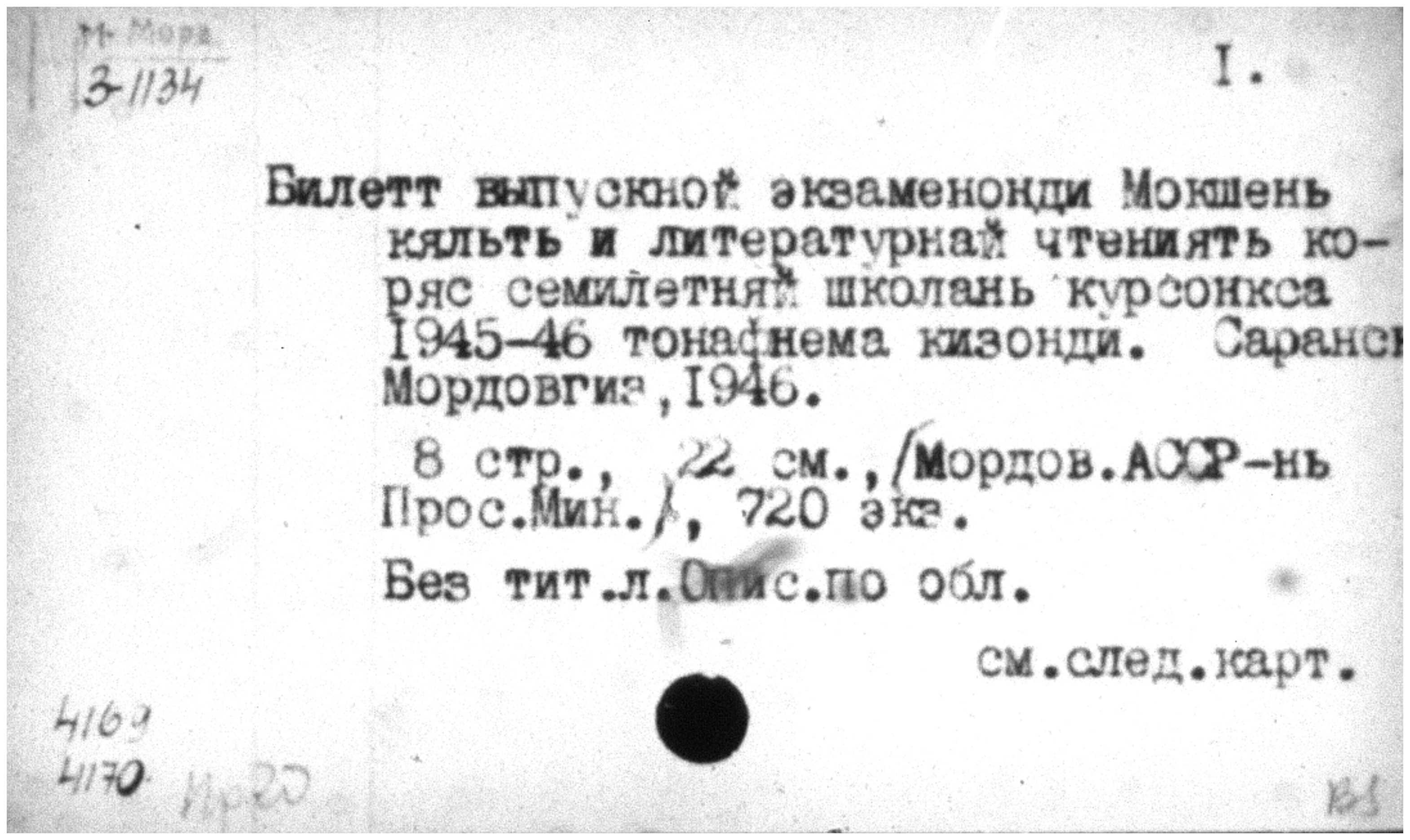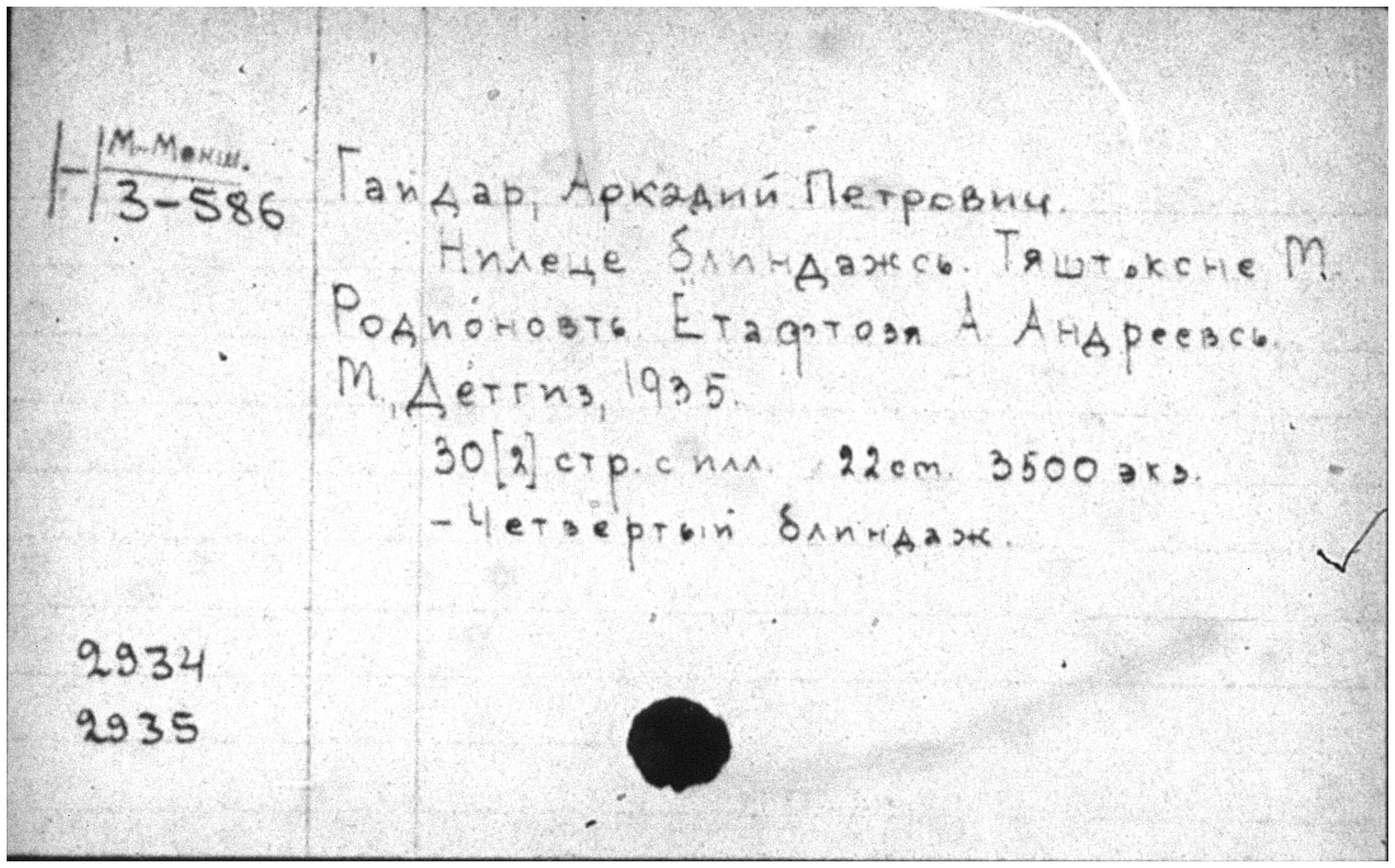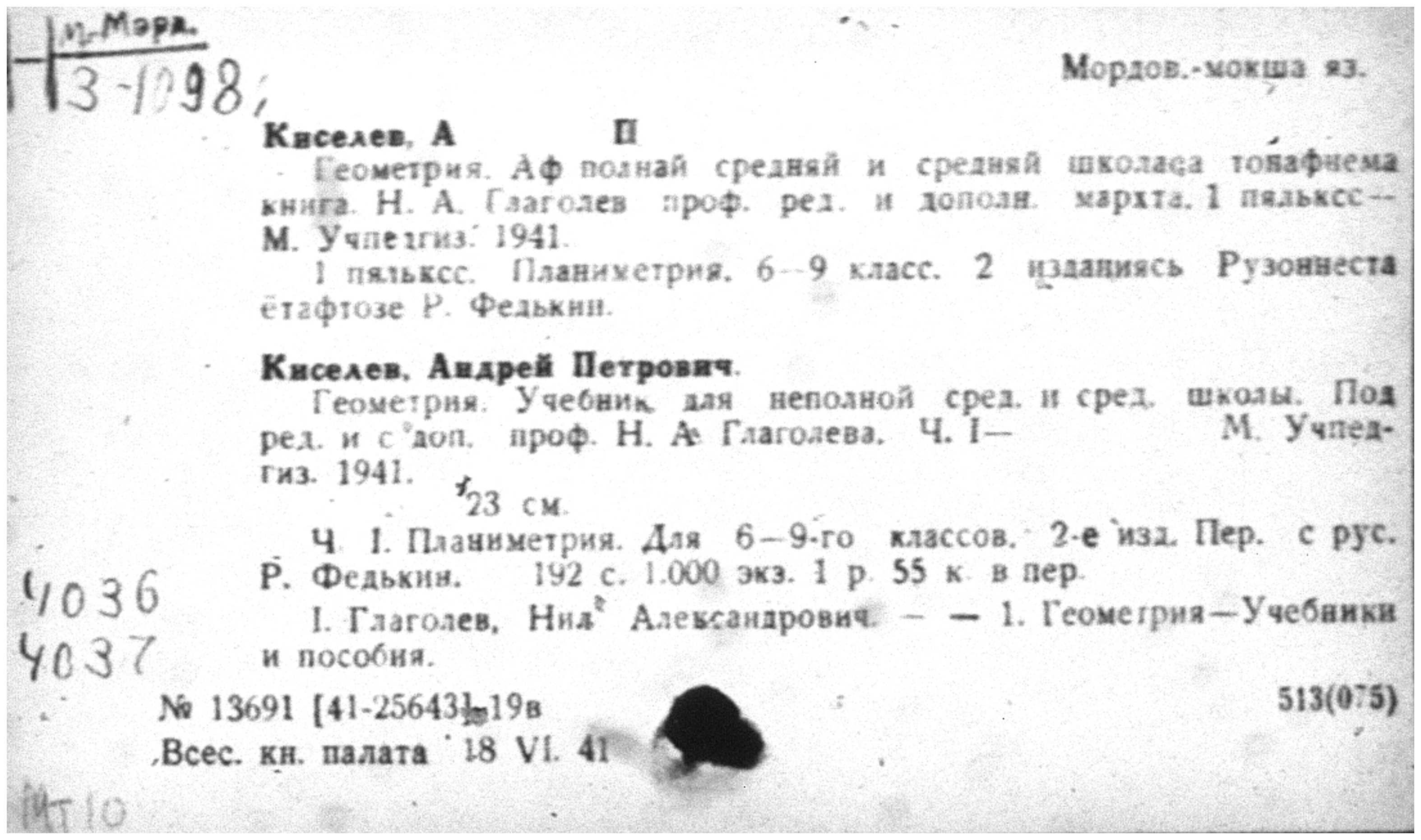After the creation of the Mordovian Autonomous Oblast’ in 1930, the Mordovian Autonomous Soviet Socialist Republic was established in 1934. In 1993, it was officially granted the status of Republic of Mordoviia within the Russian Federation. Its capital is Saransk. Two main languages are spoken in the Republic of Mordoviia: Erzya and Moksha. Both are Uralic languages.
The following is a beginning guide to bibliographic tools for researchers of Mordoviia. Though not a comprehensive overview, this guide outlines three primary ways research can access bibliographic information about Mordovian publications:
Sources: The Great Soviet Encyclopedia (Volume 16, page 566-571); Ethnologue.
LIBRARY CATALOGS
Natsional’naia biblioteka im. A.S. Pushkina Respubliki Mordoviia
http://www.library.saransk.ru/

The catalog for the National Library of the Republic of Mordoviia can be accessed through this search interface . An image of the search interface is shown below.

Users can select the database they want to search from the list on the left hand side. The catalog contains bibliographic information for the following materials:
- The electronic catalog (for books)
- Journal articles
- Local history
- Rare items
- Literature on art
- Audio materials
- Video materials
- Subscriptions
- Book Chamber of the Republic of Mordoviia
- Analytical articles
- Technology patents
On the right hand side, users can choose a basic search, an advanced search, and navigation by word, GRNTI and UDK. The advanced option is shown above and gives users the ability to search by keyword, theme, author, type of holding, ISSN/ISBN, and date of publication. The results give basic bibliographic information for holdings including title, author, date of publication, BBK, rubric, and location of available copies. An image of the results is shown below.

Rossiĭskai︠a︡ nat︠s︡ionalʹnai︠a︡ biblioteka. Otdel literatury na nat︠s︡ionalʹnykh i︠a︡zykakh.
The Russian National Library’s Department of Literature in National Languages [also known as the Department of National Literatures] of the Russian Federation, Commonwealth of Independent States, and the Baltic countries has reproduced holdings catalogs in microfiche format. The national languages imprints catalogs in microfiche format diffuse most of the difficulties associated with transliteration in the vernacular languages, spelling, forms of entry, and uncertainties with the entirety of the collection. Researchers can access the entire holdings for a specific language at the Russian National Library through the microfiche set; conveniently exporting selected titles via PDF scans. The following scans reflect some of the Erzya and Moksha Mordovian language holdings available in microfiche format.
Katalog literatury na mordovskom-erzia yazyke [microform]
New York: N. Ross, 1997. U of I Library Call Number: MFICHE 016.94746 R736k4 International and Area Studies Library, Microfilm Room. U of I record . OCLC Accession Number: 702846504.
Katalog literatury na mordovskom-moksha yazyke [microform]
New York: N. Ross, 1997. U of I Library Call Number: MFICHE 016.94746 R736k3 International and Area Studies Library, Microfilm Room. U of I Record. OCLC Accession Number: 702846540.



GENERAL RESOURCES
Letopis’ pechati and national bibliography of Mordoviia
By collecting the materials published in the republic, the Book Chamber of Mordoviia plays an important role in the preservation of Mordovian culture and national bibliography. The Book Chamber collects and preserves physical copies of books, dissertation abstracts, journals, newspapers, pamphlets, and other types of materials published in Mordoviia. The archive for local press of Mordoviia was first founded within the republic’s National Library in 1948. Since 1958, the library fulfills the role of Book Chamber for Mordoviia, and publishes records of the publications in the republic. In 1959, it began publishing letopisi pechati (also retroactively). Letopisi pechati are chronicles of bibliographic data on all items (within particular categories) published in the Republic of Mordoviia within a given year. There is detailed bibliographic information provided for each publication. Entry information for these materials includes a general classification number given at the beginning of the section, a consecutive entry number, author, title, place of publication, publisher, date, pagination, illustrations, size, serial statement, ISBN or ISSN, number of copies printed, price, government registration number, e.g. [94-1546]; and other necessary bibliographic information for citations. The National Library website for the Republic of Mordoviia currently only offers online access to the letopis’ pechati from 2006. This letopis’ pechati includes chronicles of books, journal articles, newspaper articles, articles about Mordoviia in the Russian press, abstracts of dissertations, periodicals and continuing publications, artwork, musical scores, and reviews. The chronicle includes all information necessary for citation. (SOURCE: National Library of Mordoviia)
Through WorldCat, users can find other issues of the letopis’ pechati in physical (OCLC accession number 15215211 or 52851813) and electronic form (OCLC accession number 609865379). The National Library of Mordoviia also publishes many other bibliographic and other reference materials. Users can find an overview of the publications of the last ten years on the library’s website.
Newspapers and periodicals
In 1972, 110 books and pamphlets (727,000 copies) were published in Mordoviia. The following is a select list of newspapers published in the republic: Mokshen pravda (1921) in Moksha; Erzian pravda (1921) in Erzya; Sovetskaia Mordovia (1918) in Russian; and Molodoi leninets (1939) in Russian. There are also the following two literary journals: Siatko (1929) in Erzya, and Moksha (1928) in Moksha. Users can consult Gazety SSSR 1917-1960: Bibliograficheskii spravochnik 5 for a comprehensive list of newspapers published in Mordoviia during these years.
Finno-ugorskie biblioteki Rossii
The online platform Finno-ugorskie biblioteki Rossii is a collaborative project of the National Library of the Karelian Republic, the Russian and East European Institute in Helsinki, the Slavic library of the University of Helsinki, and the M. Kastren Society, is meant to make it easier for users to navigate the different Finno-Ugric libraries in various regions of the Russian Federation and in other countries, and to create an electronic collection of publications in Finno-Ugric languages. Users search by geographical area or by names of important figures in Finno-Ugric literature and folklore. For each of the Finno-Ugric language areas of the Russian Federation – Kareliia, Udmurtiia, Komi, Marii El, Mordoviia, Khanti-Mansiisk, Murmansk, and Tver – the website provides links to major libraries and useful library resources, a list with municipal libraries, and an overview of major educational and research institutions. Of particular interest to researchers of Mordoviia may be the page with an overview of major publishing houses in Mordoviia, as well as short descriptions of significant recent works on Mordoviian history, culture, and literature.
The related databases Uralica and Fenno-Ugrika allow users to navigate other digitized Finno-Ugric-language materials. For users interested in more transnational research, the website of the National Library of Komi provides an overview of additional Finn-Ugric resources.
Archival materials
The Central State Archive of the Republic of Mordoviia is the main archive of Mordoviia. The archive does not have its own website, but users interested in materials from this archive can find information on the official website of the Republic of Mordoviia. The page designated to the Central State Archive (http://www.e-mordovia.ru/ is unresponsive as of January 2020) provides information about the archive’s services and history, as well as documents with overviews of the archive’s different collections. There are three archival guides (under “spiski fondov”):
- A comprehensive guide (“spisok fondov”)
- A guide for personal files (“spisok lichnogo proiskhozhdeniia”)
- A guide for materials for the pre-revolutionary period (“spisok fondov dorevoliutsionnogo perioda”)
Languages and keyboards
Two main languages are spoken in the Republic of Mordoviia: Erzya and Moksha. Both are Uralic languages. Erzya is also referred to as Erza-Mordvin, Erzia, Erzya Mordva, Erzya Mordvin, Mordvin, Mordvin-Erzya. Moksha is also referred to as Moksha Mordvin, Mokshan, Mordoff, Mordov, Mordvin-Moksha. Erzya and Moksha both use the same alphabet, and it corresponds with the Russian alphabet. Users interested in working with vernacular languages, can download a Cyrillic extended keyboard that can be used for Erzya, Moksha, and many of the other languages of the Russian Federation
Sources: Ethnologue; Mordovskaia pis’mennost’